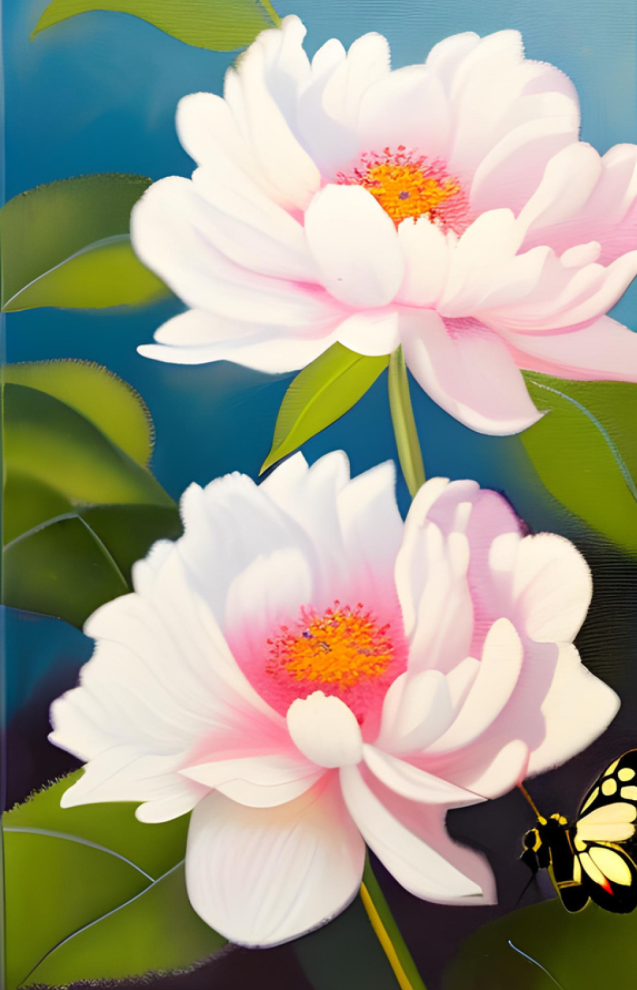Creating a butterfly garden is a rewarding endeavor that not only adds beauty to your outdoor space but also contributes to the conservation of these delicate creatures. Butterfly gardens are designed to attract and sustain butterflies throughout their life cycle, providing a haven for these winged wonders. To ensure the success of your butterfly garden, it’s essential to understand the basics of care, from selecting the right plants to creating a welcoming environment for these enchanting insects.

Choosing the Right Plants: The Foundation of Butterfly Gardens
- Nectar-Rich Flowers:
Select a variety of flowers that offer ample nectar, the primary food source for adult butterflies. Favorites include coneflowers, bee balm, butterfly bush, zinnias, and lantana. - Host Plants for Caterpillars:
Incorporate host plants that caterpillars feed on, as they are crucial for the survival of butterfly species. Milkweed, for instance, is the exclusive host plant for Monarch butterflies. - Native Plants:
Choose native plants whenever possible. Native species are adapted to the local climate, soil conditions, and are more likely to attract indigenous butterfly species.
Sunlight and Location: Creating the Ideal Habitat
- Sun Requirements:
Most butterflies are attracted to sunny spots. Choose a location for your butterfly garden that receives at least 6 hours of sunlight per day. - Wind Protection:
While butterflies enjoy a light breeze, strong winds can be detrimental. Planting taller flowers or installing windbreaks can provide protection without obstructing sunlight. - Avoid Pesticides:
Pesticides can harm butterflies at all stages of their life cycle. Embrace natural pest control methods, such as introducing predator insects or manually removing pests, to maintain a healthy garden environment.
Soil Preparation and Watering: Nurturing the Ground for Growth
- Well-Drained Soil:
Butterflies prefer well-drained soil. Amend heavy or compacted soil with organic matter like compost to improve drainage. - Mulching:
Apply a layer of mulch to help retain moisture, regulate soil temperature, and suppress weeds. Mulching also provides a clean surface for butterflies to land and bask in the sun. - Watering Practices:
Keep the soil consistently moist, especially during dry periods. Watering in the morning is ideal, allowing foliage to dry before evening to prevent diseases.
Butterfly Garden Maintenance: Cultivating a Flourishing Haven
- Regular Pruning:
Prune and deadhead spent flowers regularly to encourage continuous blooming. This practice not only enhances the aesthetic appeal of your garden but also provides a fresh supply of nectar for visiting butterflies. - Weed Control:
Keep the garden free from invasive weeds, as they can compete for nutrients and water. Regular weeding ensures that your butterfly-friendly plants have the best chance to thrive. - Attracting Butterflies with Puddling Stations:
Create puddling stations by placing shallow containers filled with moist sand or soil. Butterflies are known to gather at these stations to extract minerals and salts, essential for their health. - Provide Resting Spots:
Incorporate flat stones or other resting spots in sunny areas for butterflies to bask and warm their wings. These resting spots also serve as convenient observation points for garden enthusiasts.
Dealing with Caterpillars: A Sign of Success
- Caterpillar Identification:
Learn to identify caterpillars in your garden. Recognizing which species are present can help you better understand their specific needs and behaviors. - Tolerate Some Damage:
Accept that caterpillars will consume portions of host plants. This is a natural part of the life cycle and an indication that your garden is providing essential resources for butterfly reproduction. - Provide Extra Host Plants:
To ensure an ample supply of host plants for caterpillars, consider planting more than one of each type. This provides a buffer for caterpillar feeding without depleting the plant completely.
Educational Opportunities: Sharing the Wonder of Butterflies
- Involve the Community:
Turn your butterfly garden into a community project by involving neighbors, schools, or local organizations. Educate others about the importance of butterfly conservation and the role of your garden. - Host Workshops and Tours:
Organize workshops or garden tours to share your knowledge and passion for butterflies. This not only fosters community engagement but also spreads awareness about the significance of creating butterfly-friendly spaces.
Caring for a butterfly garden is a fulfilling journey that goes beyond mere horticulture. It’s about fostering an ecosystem that supports the intricate life cycle of butterflies and contributes to the overall health of our environment. By selecting the right plants, providing suitable habitats, and embracing sustainable gardening practices, you can create a haven that not only attracts butterflies but also inspires others to join the effort in preserving these enchanting insects. In the delicate flutter of wings, a butterfly garden becomes a testament to the beauty of coexistence between nature and nurture.


 Previous
Previous

